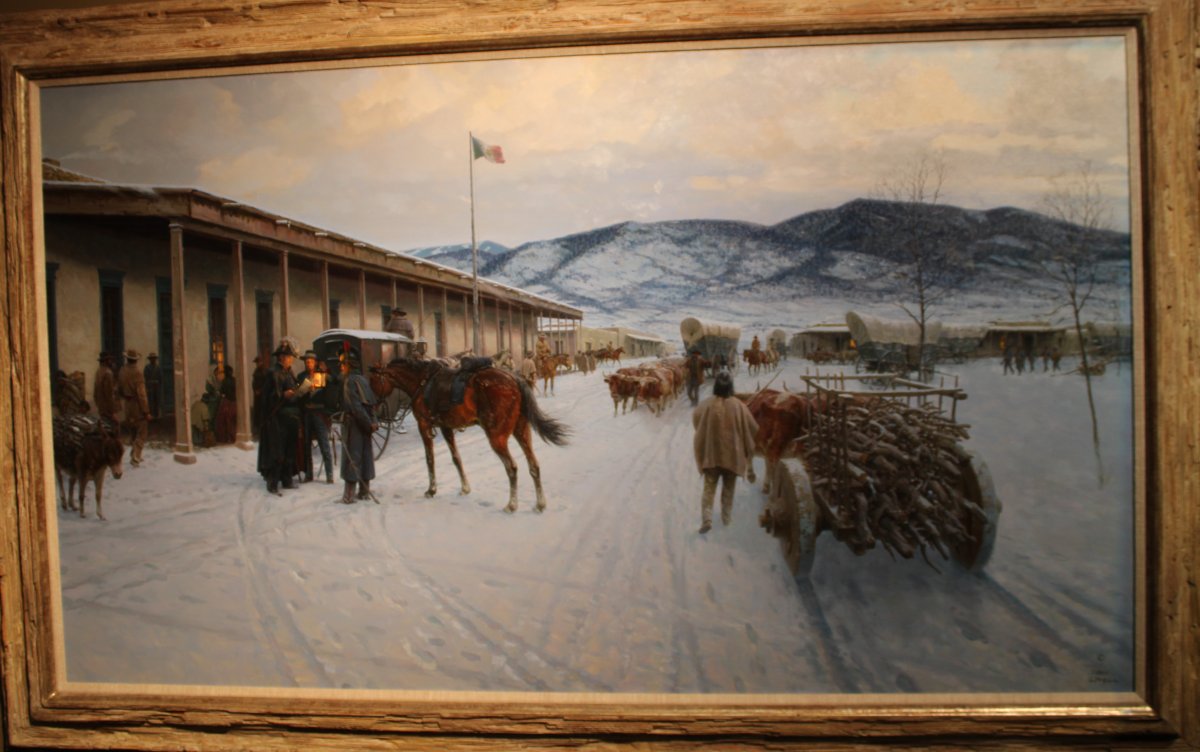December 1, 2020 - Petroleum Museum, Midland, Texas
Leaving Tucson, the sightseeing portion of our road trip was pretty much over. The only we stopped to see all the way back to Maryland was the Petroleum Museum in Midland, Texas. I had visited it once before, back in 2014 but at that time it was under renovation and much of it was closed. This time it was fully open.
Midland, Odessa and San Angelo serve as the headquarters for oil production activities in the Permian basin, a huge oil and natural gas producing area.





My favorite part of the museum was its historical paintings area.
This is a painting of the Spanish conquistidor Coronado traveling through the southwest sometime during 1540-1542. He travelled through Arizona, New Mexico, the northwestern parts of Texas and Oklahoma and into the Great Plains of mid-Kansas.







Painting of the first gusher of the Texas oil boom: Spindeltop.
On January 10, 1901, a well at Spindletop struck oil ("came in"). The Spindletop gusher blew for 9 days at a rate estimated at 100,000 barrels of oil per day. Gulf Oil and Texaco, now part of Chevron Corporation, were formed to develop production at Spindletop. The Spindletop discovery led the United States into the oil age. Prior to Spindletop, oil was primarily used for lighting and as a lubricant. Because of the quantity of oil discovered, burning petroleum as a fuel for mass consumption suddenly became economically feasible. The frenzy of oil exploration and the economic development it generated in the state became known as the Texas oil boom. The United States soon became the world's leading oil producer.
Spindletop located in the southern portion of Beaumont, Texas, (east of Houston).


A city made of Legos. Legos are plastic. Plastic comes from oil.
Every wonder about plastic? I did.
The history of modern plastics goes back to the early 20th century. A major breakthrough occurred in 1907, when Leo Hendrik Baekeland succeeded in developing a cheap and stable method for producing formaldehyde resin. The result was Bakelite, widely regarded as the first modern plastic.
Following Bakeland’s work, a string of rapid developments occurred in the world of plastic production, largely driven by increasing industrialization during the years following World War I. By the 1950s, mass production of plastics, including polystyrene, had begun in earnest. People around the world now bought plastic products every day, causing the plastic industry to grow exponentially during the following decades.
Since this early heyday of the plastic industry, material scientists have continued to develop newer and better plastics with advancing technology. Today, plastics capable of replacing metal parts and even withstanding temperatures that few other materials could are in development. This next generation of plastics may well supplant the traditional materials that humans have used for construction and industry for most of our history. Although the history of plastics is a long one, it is still very much ongoing.
There are many kinds of plastics produced through many different chemical processes. All plastics, however, are derived from oils or other polymers that appear in nature. In most cases, plastics are derived from by-products of natural gas or crude oil.
